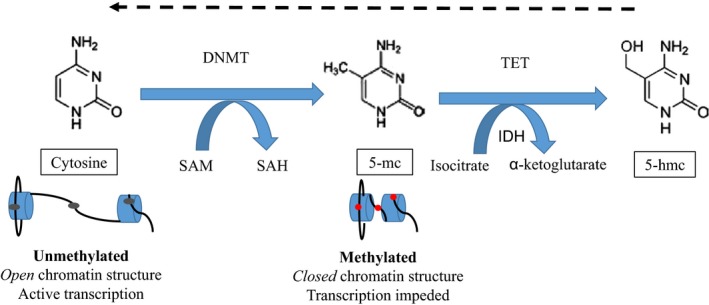Figure 5.

Overview of DNA methylation. Cytosines are methylated by the addition of a methyl group to the 5 carbon ring of the pyrimidine ring under the action of DNA methyltransferase (DNMT) enzymes; the 5‐methylcytosine (5‐mc) formed acts to repress gene transcription. The methyl group (CH3) is donated by S‐adenosyl methionine (SAM), which itself is reduced to S‐adenosyl homocysteine (SAH). Conversely, the ten‐eleven translocation (TET) proteins belong to a family of alpha‐oxaloglutarate dependent enzymes which catalyse the conversion of 5‐mc to 5‐hydroxymethylcytosine (5‐hmc), an initial step in demethylating DNA that ultimately leads back to an upregulation of transcription. Isocitrate dehydrogenase (IDH) enzymes catalyse the conversion of isocitrate to α‐ketoglutarate, a reaction that is required for the function of TET enzymes.
